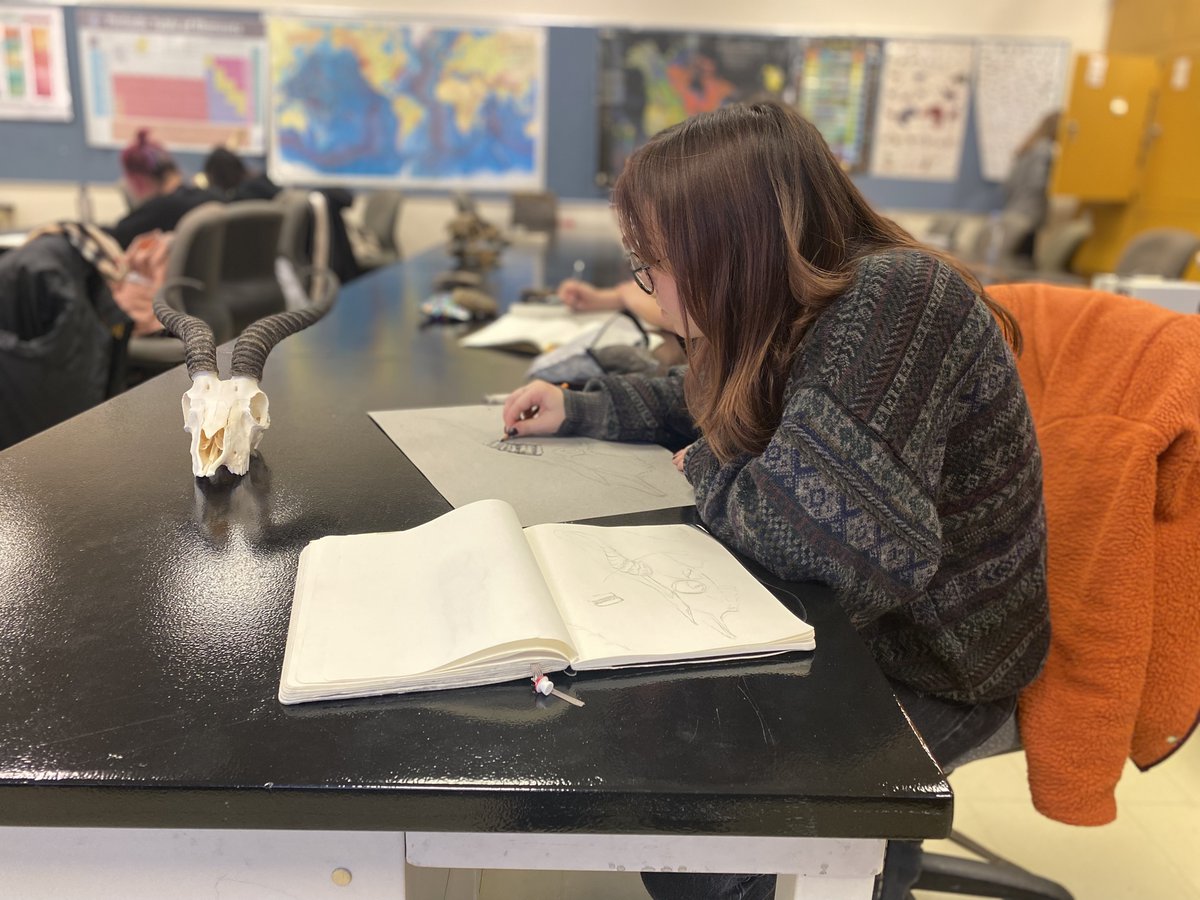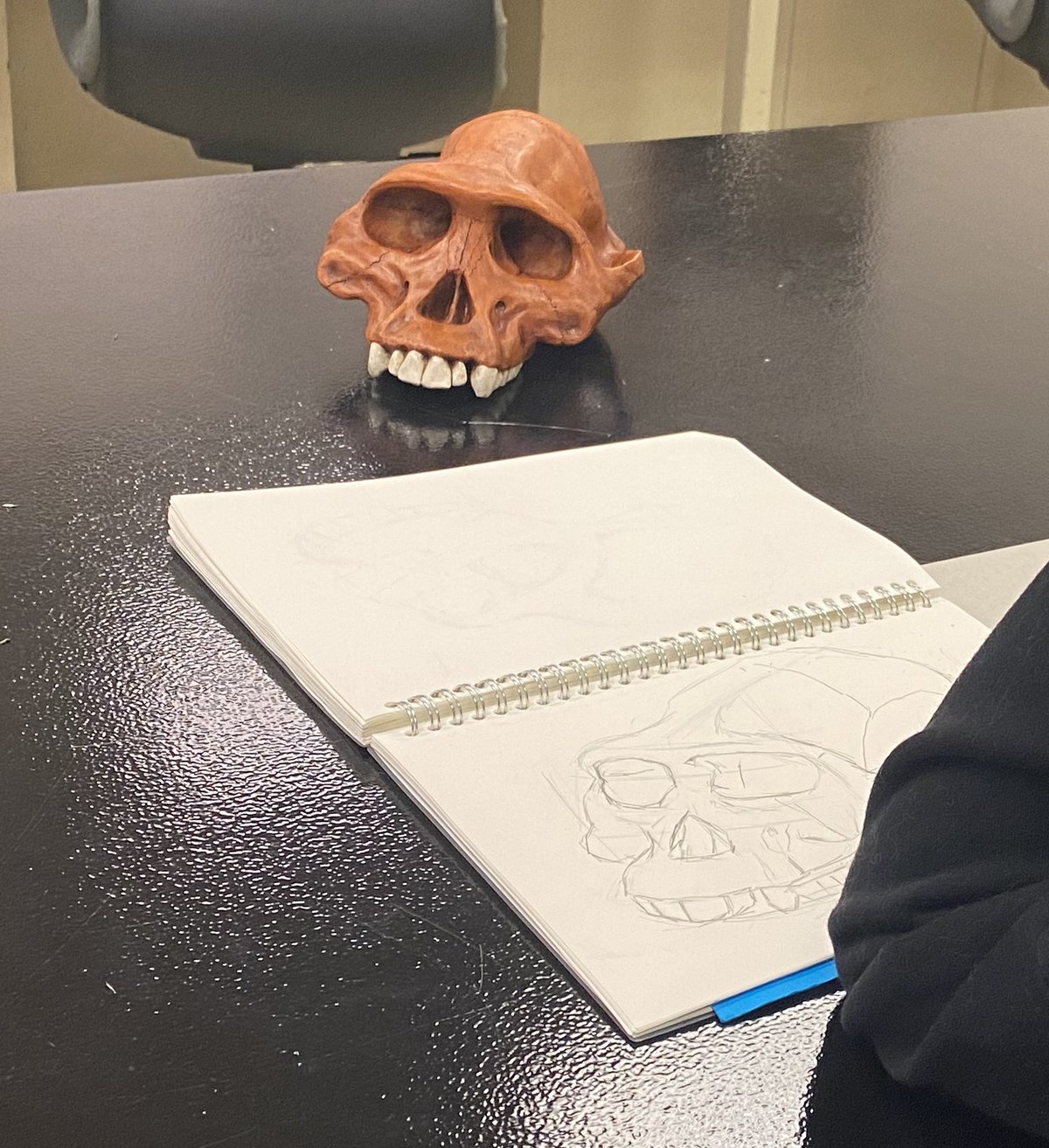Drawing Nature
A&S Professor Linda Ivany opens the paleontology lab to Professor Susan D’Amato’s ‘Drawing Nature’ class to sketch modern and ancient lifeforms.
65,000 years ago, Neanderthals, a ‘sister’ species to modern humans, drew abstract paintings of animals and geometric designs on cave walls. This early art was the first example of nature being documented through illustration. Fast-forward to 200 years ago, and it was scientist Charles Darwin who used art to conceptualize his scientific theories on evolution and natural selection in books such as The Zoology of the Voyage of H.M.S. Beagle. Throughout time, illustration has been a vehicle for people to document the beauty and wonder of the natural world.

Sophie Cohen '23, who majored in environmental biology in A&S, sketching a springbok skull during her class’s visit to the paleontology lab.
Just as Darwin’s research influenced both artists and scientists to capture nature through artwork, a professor in the College of Arts and Sciences is inspiring the next generation of illustrators at Syracuse University. For the last eight years, Linda Ivany, professor and associate chair of Earth and environmental sciences, has welcomed students from VPA Professor Susan D’Amato’s ‘Drawing Nature’ course into her classroom to view and illustrate nature in its truest form.
Hosted each fall semester by VPA’s School of Art, ‘Drawing Nature’ immerses students in the natural world, as the class travels to Central New York-area parks and zoos to study and draw different lifeforms and landscapes. In 2014, D’Amato reached out to Ivany to see if she had any interest in sharing her knowledge about fossils and paleoecology with the class. Ivany’s research specializes in studying how organisms and ecosystems evolve and respond to changes in Earth’s ancient climate, as well as how skeletons grow over the lifetime of an animal.

A rendered sketch of the skull of Australopithecus afarensis, the famous 3.2 million-year-old human ancestor known as ‘Lucy’.
Through the cross-college collaboration, D’Amato’s students visit the Paleontology Lab in Heroy Geology Laboratory to work with actual fossils, study and draw their forms, and learn about them in the process. Both Ivany and D’Amato agree that the exercise is a nice example of cross-fertilization between the arts and the sciences, similar to the philosophy behind the Bio-Art class.
While ‘Drawing Nature’ is currently offered through VPA, they hope to one day develop a team-taught course inspired by this experience that would be cross listed between A&S and VPA, allowing science majors to count it as an upper division course for their major. Such a class would give both art and science students an appreciation for the impact and importance of careful observation of form, pattern, and symmetry through drawing in the effort to understand the history of life’s diversity. The collaborative structure would allow science students to gain artistic skills from the art students, and in turn they could provide artists with scientific knowledge about the rare and ancient specimens that they are drawing.


